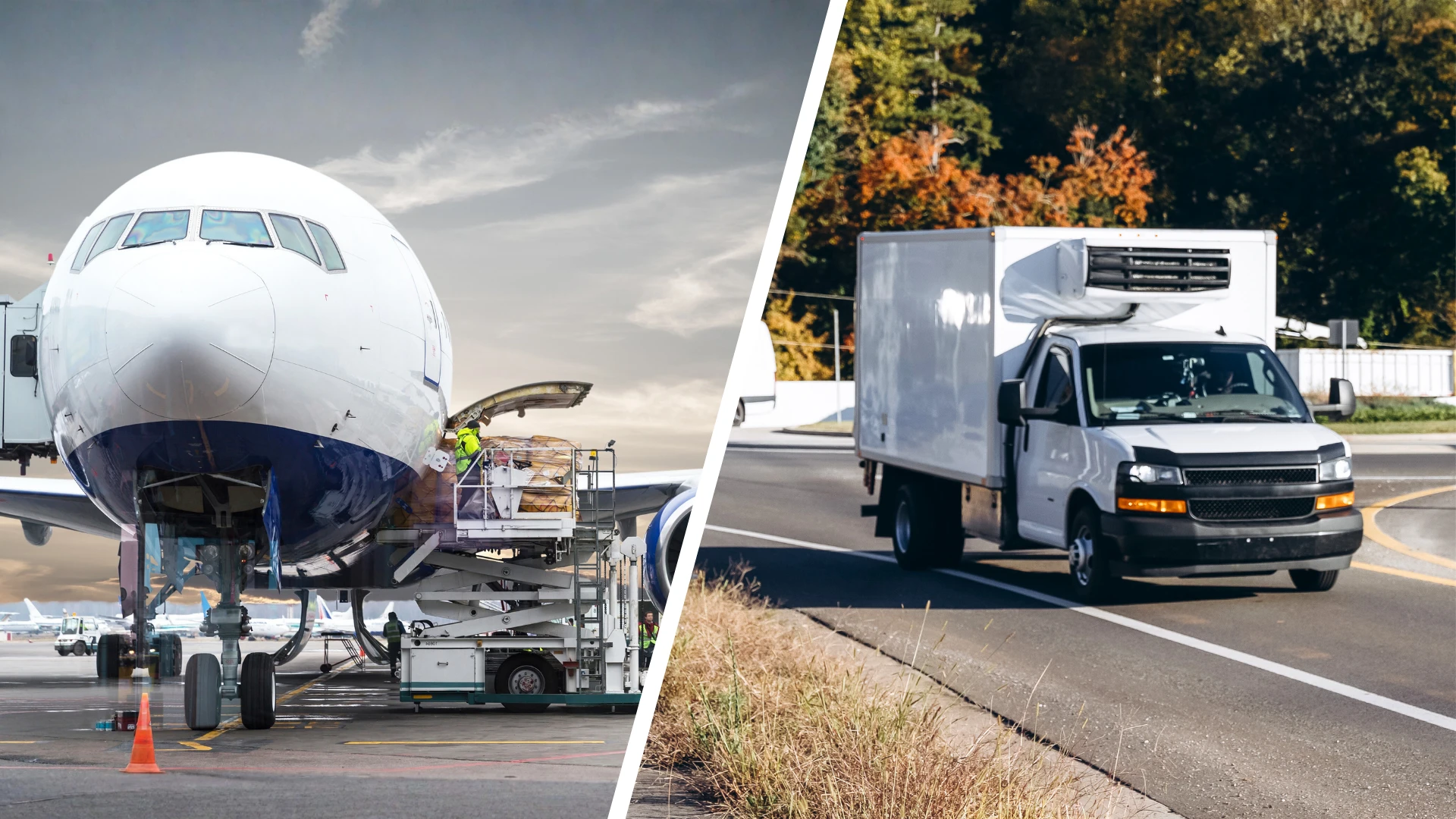
Maintaining temperature control is a legal and operational necessity when it comes to the food industry. Whether you’re shipping seafood to a restaurant, dairy to a grocery chain, or frozen items to a local deli, maintaining the correct temperature throughout the entire journey is essential to keeping food safe, fresh, and compliant. Any deviation, even if temporary, can cause a cold chain break that compromises product quality and leads to health risks, waste, and financial loss.
Understanding what causes these cold chain disruptions is critical for food producers, distributors, and retailers who rely on timely, safe, and regulated deliveries. From equipment malfunctions to inefficient route planning, the risks are many, but they’re not insurmountable with the right strategies and partners in place.
What is a Cold Chain Break
A cold chain break occurs when temperature-sensitive food products are exposed to conditions outside their required temperature range during any phase of the supply chain: transport, storage, or handling. Even a brief rise or drop in temperature can cause irreversible damage, such as spoilage, texture degradation, bacterial growth, or nutrient loss.
Common causes of cold chain failures in food delivery include:
- Inadequate or faulty refrigeration equipment. Refrigeration units that are not regularly serviced, poorly calibrated, or outdated can malfunction during transport. A single compressor failure or temperature control issue can ruin an entire shipment before it reaches its destination.
- Excessive door openings during delivery. Each time the door of a refrigerated truck is opened, warm external air enters and disrupts the controlled environment. If deliveries involve multiple stops or improperly timed door access, the internal temperature may never return to optimal conditions, leading to cumulative product degradation.
- Improper loading or airflow blockage. Incorrect stacking or overloading can block airflow within the refrigerated compartment, creating uneven cooling. Products near the cooling unit may freeze, while others far from it may warm up, resulting in inconsistent quality and possible contamination.
- Transit delays or long route times. Food products are highly perishable, and delays due to traffic, road closures, or inefficient routing can prolong exposure to less-than-ideal conditions, even if refrigeration is working. The longer the time in transit, the higher the risk.
- Human error and lack of training. Many cold chain breaks are caused by simple oversights, like not pre-cooling a vehicle before loading, failing to close the doors promptly, or neglecting to monitor temperature data during transit. Without proper protocols and training, these small mistakes can snowball into serious consequences.
The result? Products that look fine on the outside may arrive unsafe to consume, posing reputational damage and liability risks for suppliers and distributors.
How to Prevent Cold Chain Disruptions in the Food Industry
Preventing cold chain disruptions starts with a proactive, systems-based approach. Every step of the process, from warehouse loading to last-mile delivery, must be designed with temperature integrity in mind. The following best practices help food businesses protect their shipments from costly cold chain breaks:
Use Modern, Calibrated Refrigerated Vehicles
It’s not enough to have any refrigerated vehicle; the equipment must be capable of holding steady temperatures throughout transit. Modern reefer vans and trucks equipped with digital thermostats and temperature logging systems help ensure precision control. Regular maintenance schedules and equipment checks are essential to avoid mechanical failures during critical deliveries.
Plan Efficient and Reliable Routes
The longer your product is on the road, the greater the chance of a disruption. By planning routes that minimize delivery times and eliminate unnecessary stops, you reduce the risk of temperature drift. Routing software and GPS systems can also help drivers avoid delays due to road closures, weather, or traffic congestion, keeping food in optimal conditions from start to finish.
Train Drivers and Delivery Personnel
Drivers and handlers play a pivotal role in maintaining cold chain integrity. Proper training on loading procedures, handling practices, and monitoring protocols ensures that everyone involved knows how to minimize risk. This includes understanding how to react in case of equipment failure, interpreting temperature data, and following strict loading/unloading timelines.
Reduce Door Openings with Smarter Operations
Every time a vehicle door opens, it disrupts the internal environment. Using delivery windows, bulk drop-offs, or compartmentalized van setups can help minimize door openings. Vehicles with side access doors or temperature-zoned compartments can isolate smaller sections of cargo without compromising the whole shipment.
Leverage Real-Time Monitoring Technology
IoT sensors, GPS-enabled tracking, and automated temperature logging provide real-time visibility into every shipment. These technologies allow logistics managers to receive alerts about potential risks and intervene before spoilage occurs. Historical data also supports compliance with food safety regulations and improves accountability.
Implement Backup Systems and Contingency Protocols
No system is immune to failure. Having a plan B, such as rerouting a shipment to a closer facility or transferring products to a backup vehicle, can save thousands of dollars in lost inventory. Equipping vehicles with emergency power supplies or dry ice options provides an extra layer of protection.

Choose RVN for Food Delivery Without Disruptions
At Reefer Van Network, we go beyond traditional cold chain logistics by offering a flexible, food-safe delivery model tailored to modern demands. Unlike large LTL carriers that combine multiple clients’ shipments in oversized trailers, RVN specializes in small and compact refrigerated vehicles that are purpose-built for delivering food safely and efficiently.
Our nimble reefer vans are ideal for:
- Short-distance, high-frequency deliveries to restaurants, grocery stores, meal prep services, and commercial kitchens.
- Perishable, temperature-sensitive goods like produce, seafood, dairy, baked goods, and frozen meals.
- Urban and suburban areas often have limited maneuverability and parking, and time is often limited.
Each RVN vehicle is individually calibrated and maintained, ensuring consistent temperature from pickup to drop-off. Because we use compact vans, we can offer faster turnaround, more direct routes, and fewer handling touchpoints, minimizing the chance of a cold chain break at every step.
We also integrate real-time tracking and temperature monitoring, giving customers full visibility and peace of mind. And with our flexible scheduling and scalable service model, you’ll never have to compromise on delivery timing or food safety.
Don’t Let a Cold Chain Break Put Your Brand or Business at Risk. Partner with RVN and ensure that your food products arrive fresh, safe, and compliant every single time.
Back to blogYou may also be interested in

Solving the Refrigerated Freight Bottleneck: A Customer’s Guide to Reefer Expedite
The refrigerated freight is one of the most demanding segments of logistics. Unlike dry freight, temperature-sensitive goods don’t get second chances. If a load arrives late or the temperature drifts outside compliance ranges, the shipment can lose its entire value. For customers, that means one mistake can turn into thousands of dollars in losses and […]

Airport Delays and Temperature Risk: How Forwarders Mitigate the Gap
Airports are the heartbeat of global trade, connecting perishable goods to every corner of the world. But for refrigerated freight, airports are also one of the riskiest points in the journey. Unlike long-haul reefer trucking, where temperature can be monitored and maintained throughout, airports introduce multiple variables, such as customs clearance, handling procedures, flight schedules, […]
